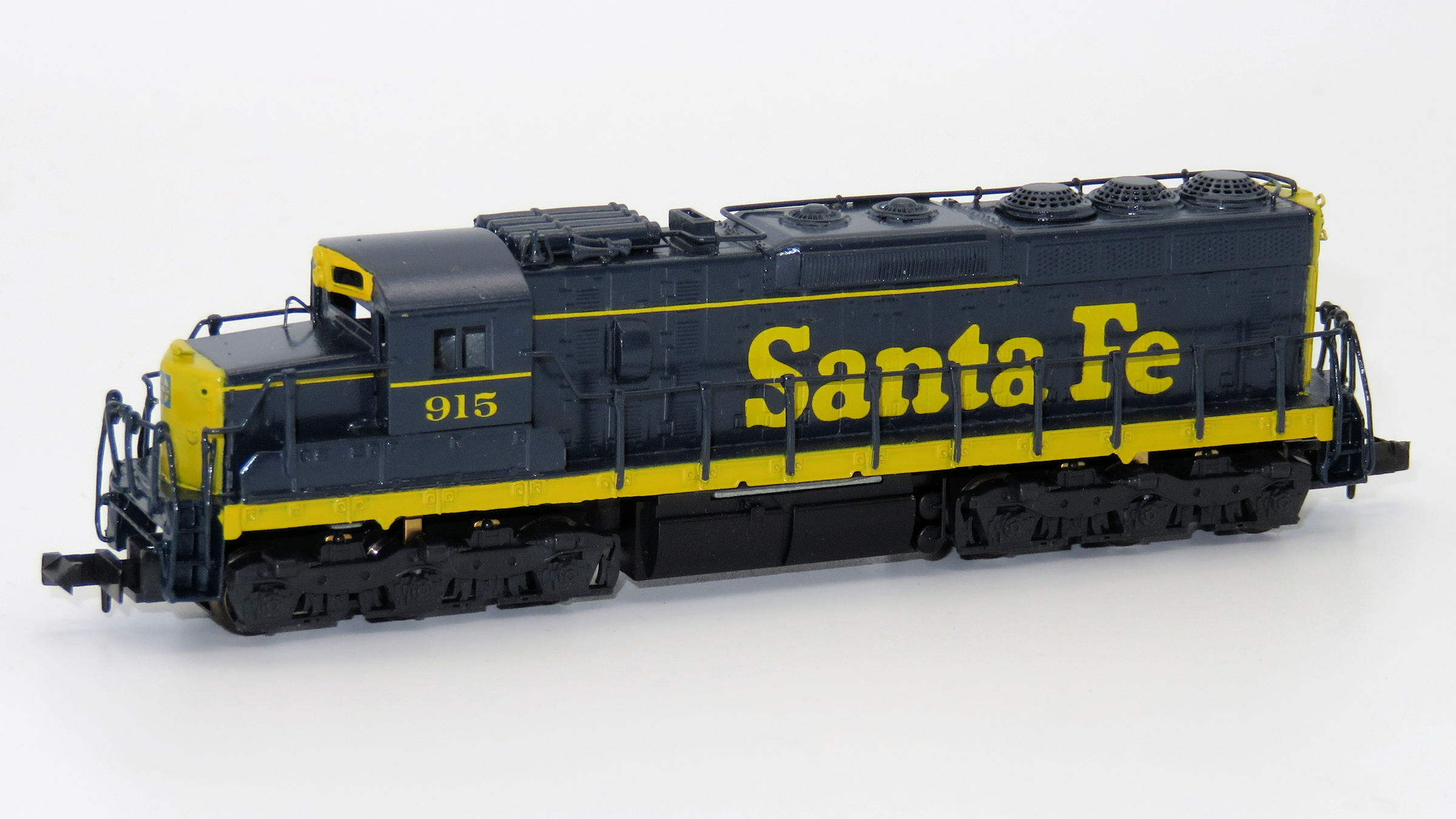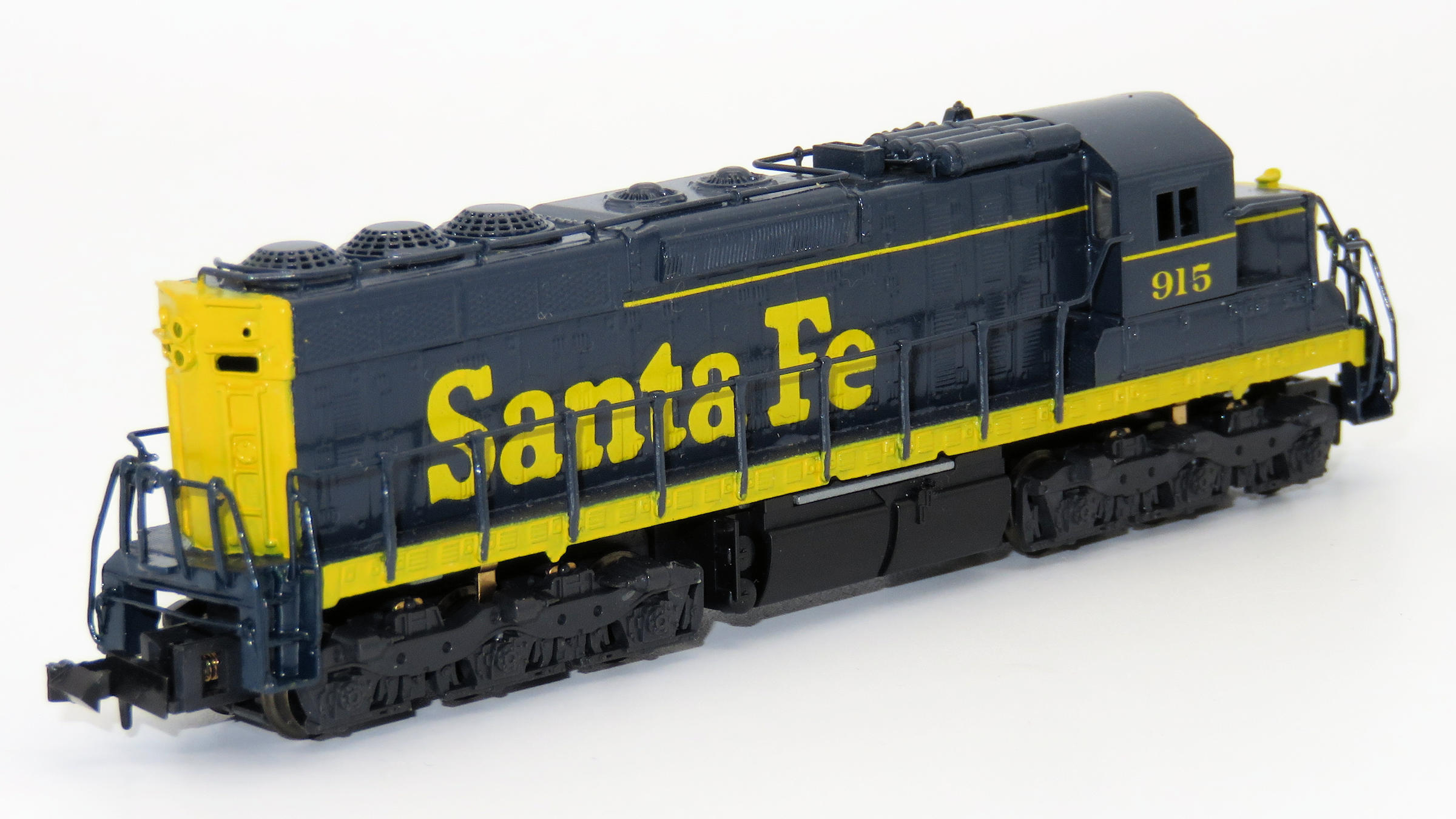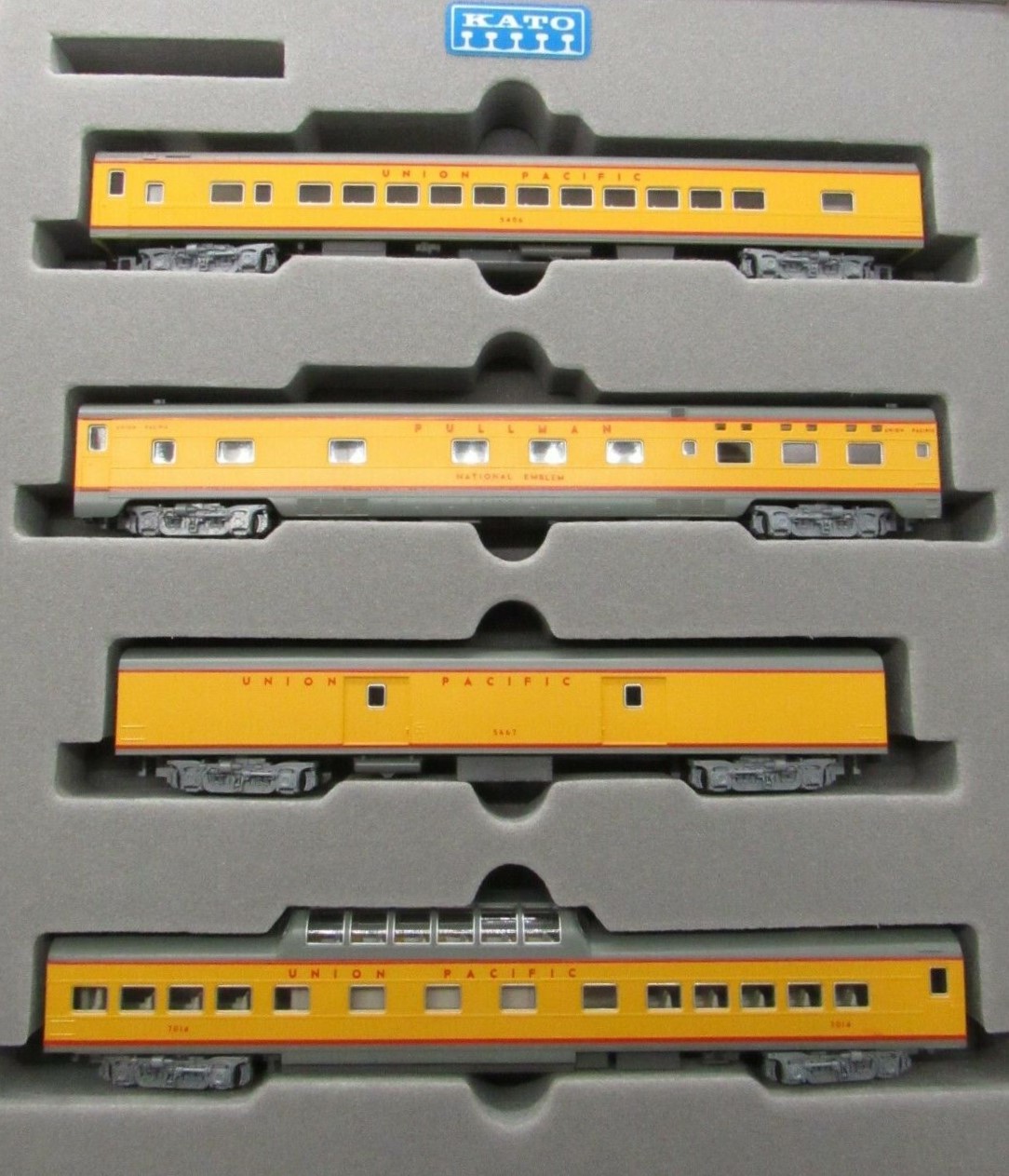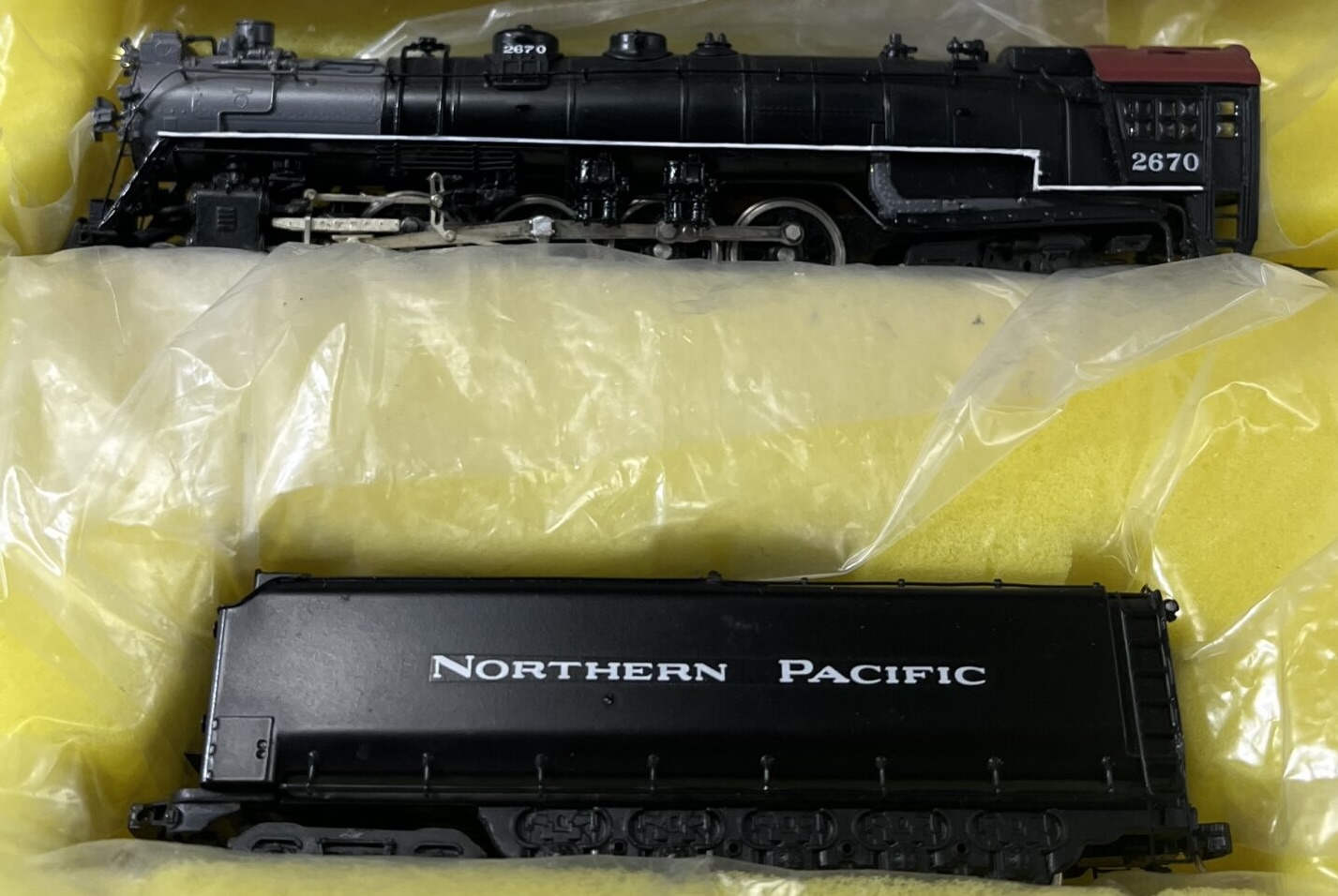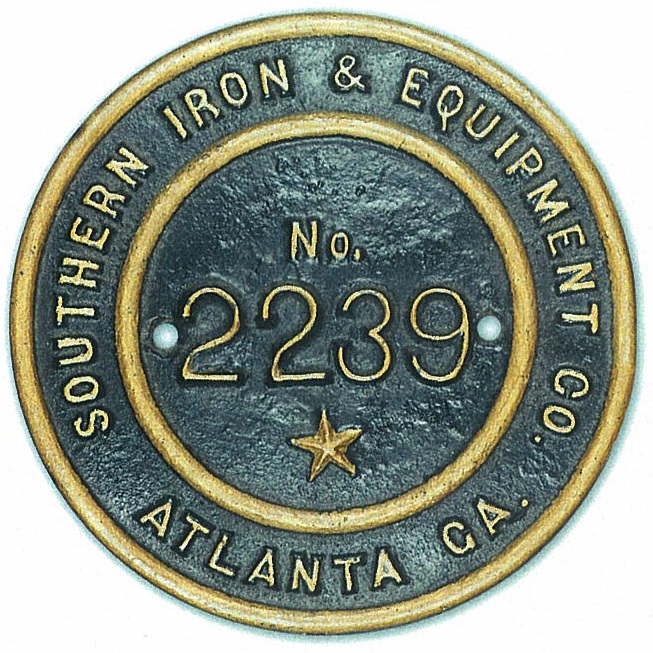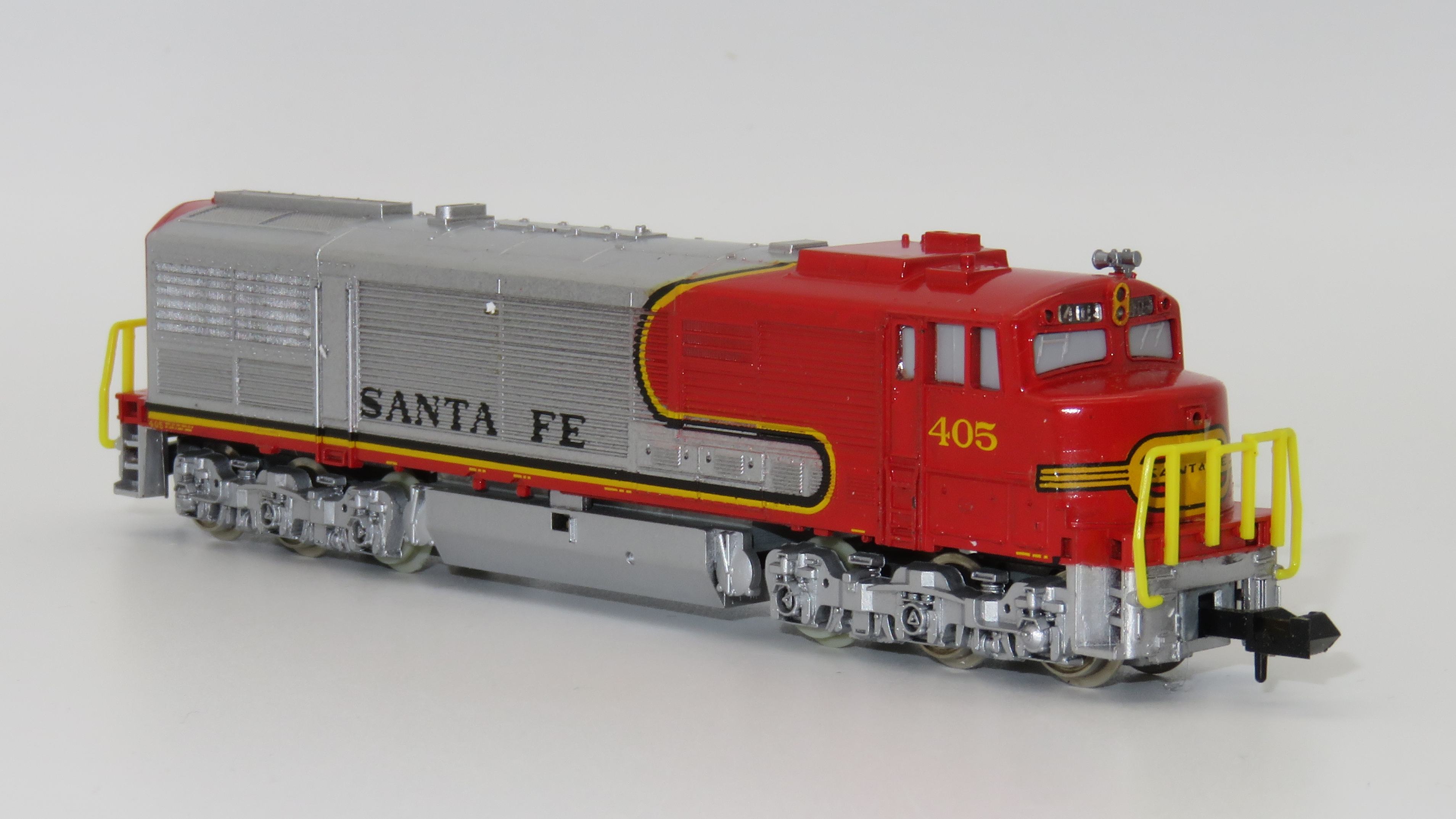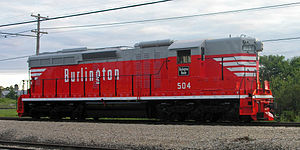Model Information: Model introduced in 1990, using brass Dai Young shells mounted on Kato (Atlas) SD7/9 mechanisms.
- Split-frame metal chassis,
- Plastic truck assemblies and gearing,
- All-wheel drive and pick-up (no traction tires),
- Open-sided 5-pole motor, with dual-flywheels,
- Open pilots with Rapido couplers,
- Chassis covered with vinyl to prevent short circuits,
- No lightboards, as they would provoke short circuits with the shell.
DCC Information: No provision for DCC.
Prototype History: The EMD SD24 was a 2,400 hp (1,800 kW) six-axle (C-C) road switcher diesel-electric locomotive built by General Motors' Electro-Motive Division of La Grange, Illinois between July 1958 and March 1963. A total of 224 units were built for customers in the United States, comprising 179 regular, cab-equipped locomotives and 45 cabless B units. The latter were built solely for the Union Pacific Railroad
The SD24 was the first EMD production locomotive to be built with an EMD turbocharged diesel engine. The first SD24 was built sixteen months before the four-axle (B-B) model GP20. Power output of the SD24 was 33 percent higher than the 1,800 hp (1,340 kW) of the concurrent Roots blower-equipped SD18s with the same engine displacement. The SD24 had 400 hp (298 kW) per axle, limited by the traction motors then available. Nevertheless, the turbocharged SD24 provided full rated power at all altitudes, which the Roots-blown SD18 could not provide.
In terms of sales, the SD24 was only a moderate success, and had average service lives in SD24 configuration (though a few deturbocharged rebuilds are still in operation), but the SD24 was a milestone in EMD locomotive development and the forerunner to today's high-powered six-axle locomotives.
EMD thought the Duluth, Missabe & Iron Range Railway would want to start purchasing the SD24 and sent the first demonstrator to the DMIR painted in the road's livery. The DMIR did not end up purchasing the SD24 and the demonstrator went to the Union Pacific Railroad.
The SD24 was the first EMD production locomotive to be built with an EMD turbocharged diesel engine. The first SD24 was built sixteen months before the four-axle (B-B) model GP20. Power output of the SD24 was 33 percent higher than the 1,800 hp (1,340 kW) of the concurrent Roots blower-equipped SD18s with the same engine displacement. The SD24 had 400 hp (298 kW) per axle, limited by the traction motors then available. Nevertheless, the turbocharged SD24 provided full rated power at all altitudes, which the Roots-blown SD18 could not provide.
In terms of sales, the SD24 was only a moderate success, and had average service lives in SD24 configuration (though a few deturbocharged rebuilds are still in operation), but the SD24 was a milestone in EMD locomotive development and the forerunner to today's high-powered six-axle locomotives.
EMD thought the Duluth, Missabe & Iron Range Railway would want to start purchasing the SD24 and sent the first demonstrator to the DMIR painted in the road's livery. The DMIR did not end up purchasing the SD24 and the demonstrator went to the Union Pacific Railroad.
Road Name History: The Atchison, Topeka and Santa Fe Railway (reporting mark ATSF), often abbreviated as Santa Fe or AT&SF, was one of the larger railroads in the United States. Chartered in February 1859, the railroad reached the Kansas-Colorado border in 1873 and Pueblo, Colorado, in 1876. To create a demand for its services, the railroad set up real estate offices and sold farm land from the land grants that it was awarded by Congress. Despite the name, its main line never served Santa Fe, New Mexico, as the terrain was too difficult; the town ultimately was reached by a branch line from Lamy.
The Santa Fe was a pioneer in intermodal freight transport, an enterprise that (at one time or another) included a tugboat fleet and an airline (the short-lived Santa Fe Skyway). Its bus line extended passenger transportation to areas not accessible by rail, and ferryboats on the San Francisco Bay allowed travelers to complete their westward journeys to the Pacific Ocean. The ATSF was the subject of a popular song, Harry Warren & Johnny Mercer's "On the Atchison, Topeka and the Santa Fe", written for the film, The Harvey Girls (1946).
The railroad officially ceased operations on December 31, 1996, when it merged with the Burlington Northern Railroad to form the Burlington Northern & Santa Fe Railway.
Read more on Wikipedia.
The Santa Fe was a pioneer in intermodal freight transport, an enterprise that (at one time or another) included a tugboat fleet and an airline (the short-lived Santa Fe Skyway). Its bus line extended passenger transportation to areas not accessible by rail, and ferryboats on the San Francisco Bay allowed travelers to complete their westward journeys to the Pacific Ocean. The ATSF was the subject of a popular song, Harry Warren & Johnny Mercer's "On the Atchison, Topeka and the Santa Fe", written for the film, The Harvey Girls (1946).
The railroad officially ceased operations on December 31, 1996, when it merged with the Burlington Northern Railroad to form the Burlington Northern & Santa Fe Railway.
Read more on Wikipedia.
Brand/Importer Information: 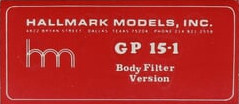 Hallmark Models was the importing arm of Bobbye Hall's Hobby Shop of Dallas, Texas. When Bobbye Hall retired in her nineties, both the importing business and the shop closed down.
Hallmark Models was the importing arm of Bobbye Hall's Hobby Shop of Dallas, Texas. When Bobbye Hall retired in her nineties, both the importing business and the shop closed down.

Manufacturer Information: Dai Young Models Company was a Korean manufacturer of brass model trains from 1974 to 2002.
Item created by: klausnahr on 2021-04-02 15:32:01. Last edited by Alain LM on 2021-06-28 04:24:22
If you see errors or missing data in this entry, please feel free to log in and edit it. Anyone with a Gmail account can log in instantly.
If you see errors or missing data in this entry, please feel free to log in and edit it. Anyone with a Gmail account can log in instantly.


